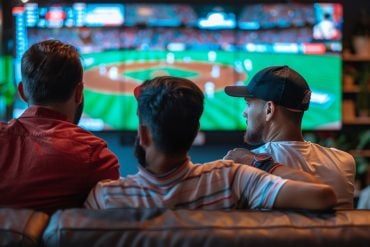Summary: Researchers have developed modular robots that can become independent robotic entities by merging and splitting. This ability allows the robots to autonomously alter their shape to suit the task at hand. The system is also able to retain sensorimotor control during alteration and self heal by removing or repairing specific parts.
Source: Université libre de Bruxelles.
Researchers at the Université libre de Bruxelles have developed self-reconfiguring modular robots that can merge, split and even self-heal while retaining full sensorimotor control. The work may take us closer to producing robots that can autonomously change their size, shape and function. The study is published in the scientific review Nature Communications.
Many robots are controlled by robotic nervous systems in which sensors and actuators are connected to a central processing unit. However, in most cases the robotic nervous systems are mapped strictly to the shape of the robot, which limits flexibility in their capabilities. Adaptability could be improved using modular robots, made up of multiple units that can form collective bodies, but coordination and control of modular robots have been constrained by a limited set of predefined shapes that the units can form into.
Marco Dorigo, IRIDIA Laboratory, Brussels School of Engineering, and colleagues design modular robots that can adapt their bodies by splitting and merging to become new independent robotic entities, autonomously choosing appropriate shapes and sizes in response to the task or environment. Their robotic nervous systems can also split and merge to maintain sensorimotor control. These robots can even self-heal by removing or replacing malfunctioning parts, including a malfunctioning brain unit. The system is demonstrated using 10 units, but the authors suggest that the system may be easy to scale-up. They propose that in the future, robots will no longer be designed and built for a particular task, and suggest that their system could eventually inspire the production of robots that can adapt to changing task requirements.

Source: Marco Dorigo – Université libre de Bruxelles
Image Source: NeuroscienceNews.com image is credited to Iridia Lab ULB.
Original Research: Full open access research for “Mergeable nervous systems for robots” by Nithin Mathews, Anders Lyhne Christensen, Rehan O’Grady, Francesco Mondada & Marco Dorigo in Nature Communications. Published online September 12 2017 doi:10.1038/s41467-017-00109-2
[cbtabs][cbtab title=”MLA”]Université libre de Bruxelles “Self-Reconfiguring Modular Robots Can Merge, Split and Heal While Retaining Full Sensorimotor Control.” NeuroscienceNews. NeuroscienceNews, 12 September 2017.
<https://neurosciencenews.com/ai-robotics-self-healing-7473/>.[/cbtab][cbtab title=”APA”]Université libre de Bruxelles (2017, September 12). Self-Reconfiguring Modular Robots Can Merge, Split and Heal While Retaining Full Sensorimotor Control. NeuroscienceNew. Retrieved September 12, 2017 from https://neurosciencenews.com/ai-robotics-self-healing-7473/[/cbtab][cbtab title=”Chicago”]Université libre de Bruxelles “Self-Reconfiguring Modular Robots Can Merge, Split and Heal While Retaining Full Sensorimotor Control.” https://neurosciencenews.com/ai-robotics-self-healing-7473/ (accessed September 12, 2017).[/cbtab][/cbtabs]
Abstract
Mergeable nervous systems for robots
Robots have the potential to display a higher degree of lifetime morphological adaptation than natural organisms. By adopting a modular approach, robots with different capabilities, shapes, and sizes could, in theory, construct and reconfigure themselves as required. However, current modular robots have only been able to display a limited range of hardwired behaviors because they rely solely on distributed control. Here, we present robots whose bodies and control systems can merge to form entirely new robots that retain full sensorimotor control. Our control paradigm enables robots to exhibit properties that go beyond those of any existing machine or of any biological organism: the robots we present can merge to form larger bodies with a single centralized controller, split into separate bodies with independent controllers, and self-heal by removing or replacing malfunctioning body parts. This work takes us closer to robots that can autonomously change their size, form and function.
“Mergeable nervous systems for robots” by Nithin Mathews, Anders Lyhne Christensen, Rehan O’Grady, Francesco Mondada & Marco Dorigo in Nature Communications. Published online September 12 2017 doi:10.1038/s41467-017-00109-2






